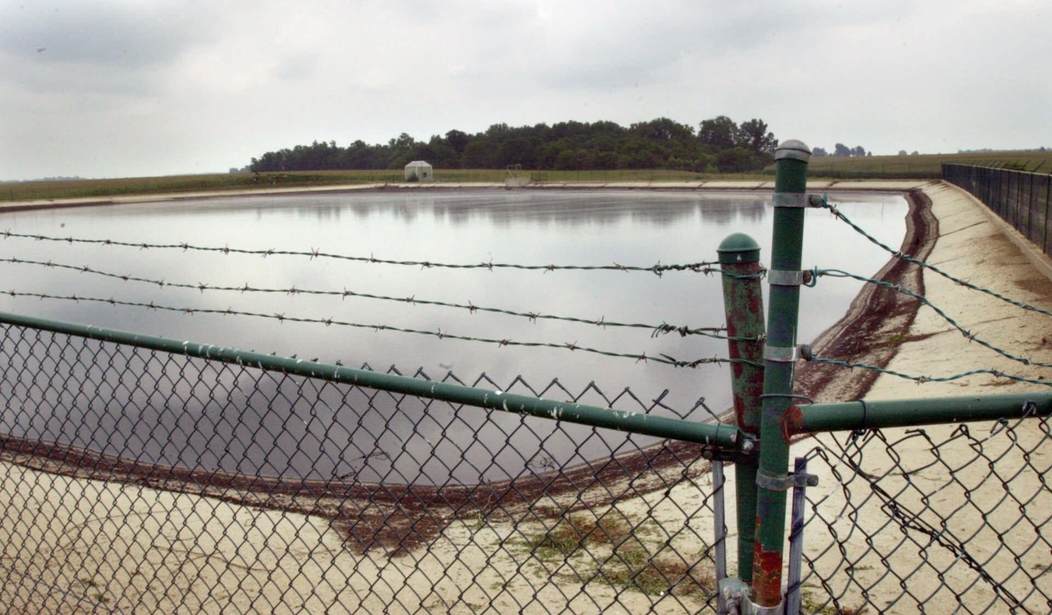Residents of a small town in rural northeast Ohio are up in arms about plans to build a 10 million-gallon lagoon in their backyards that would process both human and animal waste. They fear the massive storage tank could damage the environment and harm their wells and property values. They’re also voicing concerns about the pungent odor that would likely come along with the proposed lagoon.
In Creston, Ohio, recently, local residents packed a school gymnasium to express their concerns about the Quasar Energy Group’s plans to build the massive waste processing facility on farmland between Wooster and Creston, Ohio.
The town hall meeting was organized by Canaan Residents Against Pollution (CRAP), also known as Canaan Residents Against the Poop Pond. In attendance were farmers, local government officials, and neighbors of the project under consideration. Quasar, a renewable energy and organics management company, said in the project’s permit application filed with the Ohio EPA that the planned earthen-lined manure storage structure would hold 10 million gallons of anaerobically digested biosolids. It could also process up to 300,000 gallons of hog manure annually at a farm they are leasing from Wayne County farmer Jason Wiles.
Biosolids are nutrient-rich organic material resulting from the treatment of sewage sludge. When treated and processed, biosolids can be recycled and applied as fertilizer to improve and maintain productive soils and stimulate plant growth.
[…]
Once the wastewater reaches the treatment plant, the sewage goes through physical, chemical and biological processes which clean the wastewater and remove water from the solids. If necessary, the solids are then treated with lime to raise the pH level to eliminate objectionable odors. The wastewater treatment process sanitizes wastewater solids to control pathogens (disease-causing organisms, such as certain bacteria, viruses and parasites) and other organisms capable of transporting disease.
In other words, human poop is treated and made usable for crop fertilization. An anaerobic lagoon, also known as a manure lagoon, is a man-made clay-lined pool filled with waste that is processed by way of anaerobic respiration. After undergoing the treatment process, the waste is converted into carbon dioxide and methane. The liquid layer is drained regularly and used for fertilizer. Some farmers also trap the residual methane, which can then be converted to energy.
Understandably, people are reluctant to have a 10 million-gallon poop pond in their backyards. (Speaking from personal experience I can tell you they smell exactly like you imagine they’d smell—and twice as bad.)
The CRAP group has created a Facebook page and a GoFundMe campaign where they say they’re raising money to:
…oppose Quasar Energy Group’s plan to install a 10 million gallon human waste bi-products storage lagoon on Pleasant Home Rd in our rural, farming community. There are several houses, family farms and a church located within 2 miles of the proposed lagoon location. This money will be used for legal fees and other expenses related to trying to save our land and water.
The group is hoping to raise $50,000 for their campaign but have thus far only collected $2000.
Barb Kinney, who was in attendance at the town hall meeting, said she fears property values will decline if the lagoon is allowed, adding that, based on her research, the lagoon’s neighbors could see their values reduced by 13 to 30 percent. “We won’t know what happens until it happens,” she warned.
Brock Yoder, one of the CRAP group’s organizers, lives less than a mile from the proposed lagoon. He said residents are concerned about the odor, the effect on water quality and property values, and increased truck traffic in the area. He told attendees at the meeting that Quasar has a sketchy track record in the area. “They had an odor problem when they tried to run the city’s wastewater treatment plant. Pittsfield Township in Lorain County also had concerns about storage lagoons in their neighborhood and were successful to stop Quasar,” Yoder said.
Brandon Mantel, a hydrology expert, encouraged residents to have their wells tested before the project is completed so they can compare before and after results.
This story is a classic case of NIMBY—not in my backyard. Everyone recognizes that disposal of human and animal waste is a necessary evil, especially in a state like Ohio, where farms proliferate. According to the Ohio Livestock Coalition, there are an estimated 73,000 farms in the state, half of which have livestock. Ohio farmers raise 1.25 million cows for beef every year and 270,000 cows for dairy production. A 1400-pound heifer produces 115 pounds of manure per day—approximately 21 tons per year— and it’s gotta go somewhere. But if you’ve ever had the pleasure of riding behind a manure spreader on a country backroad, or driven past a farm with a manure lagoon, you will likely have some sympathy for residents who have to live near them, even as you respect a property owner’s right to do with his property what he wishes.










Join the conversation as a VIP Member